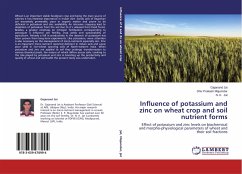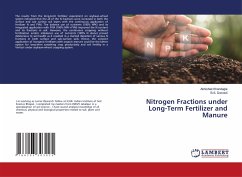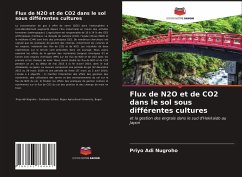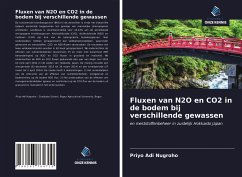
Soil N2O and CO2 Fluxes Under Different Crop
And Fertilizer Management in Southern Hokkaido Japan
Versandkostenfrei!
Versandfertig in 6-10 Tagen
27,99 €
inkl. MwSt.

PAYBACK Punkte
14 °P sammeln!
Greenhouse gases (GHG) concentration in the atmosphere has increased significantly from the industrial era due to human (anthropogenic) activities. Agriculture accounts for 10-14% of the global anthropogenic GHGs. Carbon dioxide (CO2), nitrous oxide (N2O), & methane (CH4) are three of the major GHGs. Many researchers reported that field management practices including crop and fertilizer induced CO2 and N2O fluxes. Results of two field experiments are reported in this book. We examined the effects of nutrient managements [chemical fertilizer (F) and manure with chemical fertilizer (MF) treatmen...
Greenhouse gases (GHG) concentration in the atmosphere has increased significantly from the industrial era due to human (anthropogenic) activities. Agriculture accounts for 10-14% of the global anthropogenic GHGs. Carbon dioxide (CO2), nitrous oxide (N2O), & methane (CH4) are three of the major GHGs. Many researchers reported that field management practices including crop and fertilizer induced CO2 and N2O fluxes. Results of two field experiments are reported in this book. We examined the effects of nutrient managements [chemical fertilizer (F) and manure with chemical fertilizer (MF) treatments] on N2O and CO2 fluxes in grassland and cornfield. We investigated N2O and CO2 fluxes for one year from the beginning of May 2013 to the end of April 2014 in Southern Hokkaido, Japan. The measurement included a freezing period (22 December 2013 to 26 March 2014) and a melting period (27 March to 2 April 2014). The study has 2 objectives: 1) To clarify the interaction of the effects of nutrient managements, land uses and soil environments on soil N2O flux. 2) To investigate the effects of management practices (crop and nutrient) on soil CO2 flux from grassland and cornfield in winter season.












